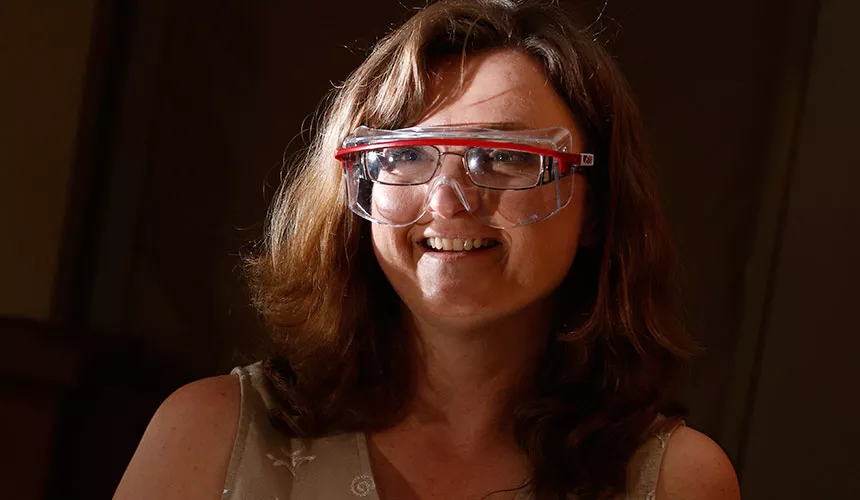
Two things you need to know about Jacqueline Bennett: she hates waiting for things to boil, and she’s fascinated by things that glow.
Both led her to invent a new chemical process to make imines, a class of compounds used in everything from rust inhibitors to cholesterol-lowering drugs. In July 2014, she received a United States Patent for her discovery, which is safer, faster and more environmentally friendly than traditional methods.
Bennett became interested in green chemistry by necessity. Pregnant and faced with the prospect of breathing toxic vapors known to cross the placenta, she began looking for alternative solvents to use in her organic chemistry labs.
She discovered her patented process while testing an imine synthesis method that didn’t require boiling. The reaction formed a gold, glitter-like compound—so fast that she almost missed it while taking notes. Since then, Bennett and the students in her undergraduate research group, BLONDES (Building a Legacy of Outstanding New Developments and Excellence in Science), have made more than 200 compounds using the patented process. Her favorites are those that glow under UV light from the small flashlight she carries around.
For Bennett, it’s the thrill of discovery and the challenge of problem-solving that make chemistry fun, and she does her best to show students that “chemistry is all around us.” For example, in one class she had students combine five household compounds with water, watch the resulting mixture turn fluorescent blue, and test how long it took for the fluorescence to “turn off” in relation to the quantity of particular ingredients.
She’s always looking for the next cool thing. After reading about sonoluminescence on the treadmill one morning, she started working with a colleague to build a “ray gun” that would shoot sound waves at chemical compounds and make them glow.
“I like color, I like sound,” she says, “and I like stuff that other people haven’t done.”